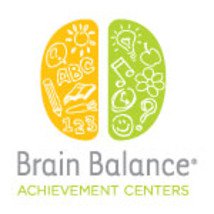Setting consistent boundaries for your child can help her develop into a happier, better-behaved child.
Sponsored by Brain Balance Achievement Center
Written by K. Kendall and C. Powell
How many times has your child thrown a fit at a storebrbecause you did not buy him or her what she wanted? Maybe your child does notbrreact loudly and with obstinacy but instead shows total disinterest in friends,brfamily and activities. These behaviors can be a symptom of a hemisphericbrimbalance. Each side of the brain has different traits, and when your child hasbra deficiency on one side of the brain, certain behaviors become apparent. Understandingbrwhere the imbalance occurs can help you better establish boundaries and improvebrbehavior. Setting boundaries for your child can help lessen such unwanted reactions.brAlso, using consistent negative or positive reinforcement can help your childbrknow when boundaries have been crossed. By creating consistent expectations forbryour child, you can help him or her develop into a happier, better-behavedbrchild.
Why does my child actbrout?
Often bad behavior is a direct result of an imbalancedbrbrain. When one side of the brain is stronger than the other, both goodbrbehavior and bad behavior will be out of sync. Poor behavior is often a sign ofbran inability to appropriately respond to a certain setting or to people'sbrreactions. This can manifest itself as temper tantrums, public meltdowns,brblatant disobedience, withdrawal from friends and activities, shyness, lazinessbror compulsive behavior.
Certain emotions are associated with the different sides ofbrthe brain. Happiness, anger and surprise are left brain emotions, while rightbrbrain emotions are negative motions that give your child good reason, likebrdifferent fear responses that keep your child safe. Therefore, if your child isbrmoody or even depressed, this can be a result of a left-brain deficiency. Isbryour child wild and disruptive? This could be due to a right-brain deficiency. Thebrdeficiency of one hemisphere intensifies the traits of the opposite side.
An imbalance results in your child's inability to know howbrto act appropriately. Imagine how it feels when you are in a crowded, smallbrplace. You feel completely overwhelmed, antsy and just want to get out of therebras fast as you can! A child with a hemisphere imbalance often feels like this inbrcertain situations, and it's probably why he or she might act out with poorbrbehavior. Learning to verbalize his or her needs instead of throwing a tantrumbror becoming sad can help the child overcome these poor behaviors. A betterbrbalanced brain results in your child's ability to understand his or her ownbremotions and intellect and how to respond to different, overwhelmingbrsituations.
How do I createbrboundaries?
Consistency is key in creating boundaries for your child.brBeing inconsistent lets your child know that these boundaries are not seriousbrand that by continually pushing your buttons, they can get the result they wantbrwith persistence.
Creating a structured environment and routine decreasesbrstress and benefits brain development. Creating house rules is a beneficial waybrto set boundaries at home. Involve your kids in the development of a homebrroutine. Having them discuss what areas they need to improve at home or wherebrthey want to help allows your child to take ownership of a facet of his or herbrlife. This creates responsibility, allowing your child to become a strongerbrindividual. In addition to showing respect for you and the rest of the family,brtaking an active role in the household creates self-worth and improvesbrself-esteem.
Communication is another important part of settingbrboundaries. Set clear and concise expectations for your child by observing hisbror her behavior. Better conduct is a direct result of greater self-autonomy.brOnce your child knows what you expect out of him or her, they can begin tobrself-monitor their own behavior. Verbally expressing when they feel overwhelmedbrby a situation or the impulses is the overall goal of setting boundaries.brInstead of acting out due to their natural impulses, you want to teach yourbrchild that it is okay to let you know when they feel a situation is too much tobrhandle. Once your child can verbalize his or her needs, he or she will be ablebrto better understand verbal cues, facial cues and finally, body language. Everybrparent's natural tendency is to solve every issue that a child must face;brhowever, the child will never be able to correct his or her impulses unless youbrlet him or her be a more independent child who is responsible for his or herbrown behavior.
How do I enforce boundaries?
Deciding between positive or negative reinforcement isbrdifficult. However, children respond to each differently, and often this is abrresult of their hemispheric deficiency. A left-brain deficient child will needbrpositive reinforcement, while a right-brain deficient child will respond betterbrto negative reinforcement.
A left-brain deficient child is one who exhibits gloomy orbrmoody behavior. Positive reinforcement means happy emotions, i.e. the releasebrof dopamine in the left side of the brain. A child with a left-side deficiencybrwill be motivated to accomplish their goals by reward. When they are crossing abrboundary, phrase the reinforcement as “if you do x, then you will receive y.” Hopebrin a left-brain deficient child is a great motivator.
A right-brain deficient child is hyperactive or prone tobrargue or oppose what you say. Negative reinforcement is required whenbrcorrecting crossed boundaries. They need to hear, “If you do not do x, then you will not get y.” Immediate reinforcement isbrimportant because if the punishment is too far away, they will lose interest.brDo not take away something they have already earned, as this will just have thebropposite effect.
Brain BalancebrAchievement Centers offer the Brain Balance Program ® in 54 nationwidebrlocations. The Brain Balance Program® is an individualized and comprehensivebrapproach to helping children with neurobehavioral and learning difficultiesbrsurmount their unique challenges.
This proprietary, non-medicalbrprogram has been successful in helping thousands of kids reach their physical,brsocial/behavioral health and academic potential. We work with children whobrsuffer with ADD/ADHD, Dyslexia, Tourette's, Asperger's and Autism SpectrumbrDisorders.
